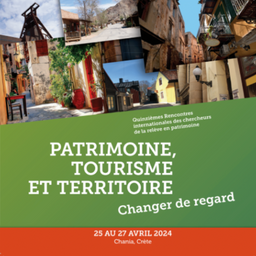In search of Pigalle: the question of cultural heritage in the sexualized district of Paris
My Session Status
The Pigalle district lies on the border of the 9th and 18th arrondissements of Paris. Since the opening of the famous Moulin Rouge cabaret in 1886, Pigalle has been internationally recognized as a sex district and a major tourist area in Paris. Using this district as a case study, this research analyzes conflicting heritage (creation, evolution, preservation, and destruction) through multidimensional forms.
Pigalle has undergone several changes in its offer, practices, and conservation methods, largely in response to changing sex work laws, as well as major events impacting tourism and the city of Paris, and socio-economic circumstances. Throughout its evolution, however, Pigalle has remained a sexualized landscape. Today, Pigalle’s main street, Boulevard de Clichy, is lined with neon lights, sex toy stores, and strip clubs, offering a “red-light district” atmosphere, and the Moulin Rouge still offers shows every night, at a high price, making it more elitist than it was originally. Furthermore, gentrification has greatly influenced Pigalle’s social dynamics, the way its heritage is preserved, and the tourist groups it attracts. Pigalle is no longer the cultural melting pot it once was, but rather visibly segregated. In the part of Pigalle located in the 9th arrondissement, a sub-neighbourhood has developed under the SoPi (South Pigalle) brand, and this area is home to a number of upscale bars and hotels with a “sexy-chic” atmosphere. In the northern part of Pigalle, often referred to as lower Montmartre, nestle charming little cabarets, both historic and contemporary. They are the preferred venue for nightly performances by artists who deconstruct traditional gender norms. This tradition is deeply rooted in Pigalle’s history throughout the 20th century, and also reflects the current popularity of drag-queens in the Western world.
At the same time, Pigalle is actively undergoing desexualization, and thus depatrimonialization, illustrated by the emergence of businesses such as chain restaurants, supermarkets, banks, and pharmacies, and urban projects led by the city of Paris (the establishment of a green space on Place Pigalle, Pigalle’s former cultural centre). This desexualization of Pigalle often took place under the guise of initiatives aimed at revitalizing the neighbourhood, reducing crime, and serving the residents. Today, sex workers are no longer visible in Pigalle, but rather located on the outskirts of Paris, off the tourist trail.
Using qualitative research methods such as in-depth semi-structured interviews with local business owners and Paris city actors, short interviews with tourists and locals, and field observations, this study of cultural heritage in Pigalle analyzes the precariousness of heritages that is applicable to many heritage objects (both tangible and intangible) but also largely absent in the developing field of heritage studies. It also reveals the “bottom-up” impact of heritage preservation insofar as its heritage is strongly valued and maintained by the expectations and practices of tourists. Finally, it contributes to discourses on “contested heritage” in terms of morality, social harmony, and multiculturalism.
